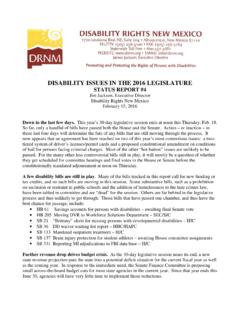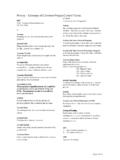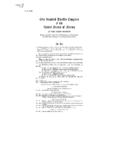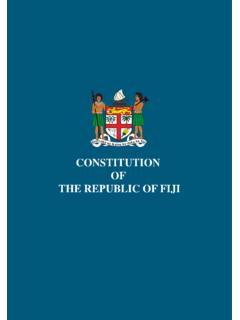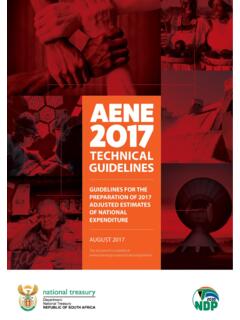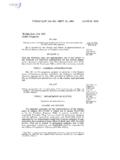Transcription of CONSTITUTION OF ZAMBIA TECHNICAL …
1 THE CONSTITUTION OF ZAMBIA . _____. ARRANGEMENT OF ARTICLES. PREAMBLE. Article PART I. SUPREMACY OF CONSTITUTION . 1. Supremacy of CONSTITUTION 2. Defence of CONSTITUTION 3. Continuous effect of CONSTITUTION PART II. SOVEREIGNTY. 4. Republic of ZAMBIA 5. Sovereign authority 6. National symbols 7. Laws of ZAMBIA PART III. NATIONAL VALUES, PRINCIPLES AND. ECONOMIC POLICIES. 8. National values and principles 9. Application of national values and principles 10. Basis of economic policies 11. President's report on application of values and principles PART IV. CITIZENSHIP. 12. Existing citizenship 13. Categories of citizenship 14. Citizenship by birth 15. Citizenship by descent 16. Citizenship by registration 17. Citizenship by adoption 18. Dual citizenship 19.
2 Renunciation and deprivation of citizenship 20. Citizenship Board of ZAMBIA 21. Entitlements of citizen 22. Responsibilities of citizen 23. Reference to citizenship of parent PART V. BILL OF RIGHTS. Status, Application and Interpretation 24. Status of Bill of Rights 25. Recognition of role of civil society 26. Interpretation of Bill of Rights Civil and Political Rights 27. Protection from discrimination 28. Right to life 29. Freedom of person 30. Protection from inhuman treatment and security of person 31. Protection from slavery, servitude and forced labour 32. Protection of privacy of person, home, property and communication 33. Freedom of conscience, belief and religion 34. Freedom of expression 35. Access to information 36. Freedom of media 2.
3 37. General political rights 38. Freedom of association 39. Right to assemble, demonstrate, picket and petition 40. Freedom of movement and residence 41. Refugees and asylum seekers 42. Acquisition and protection of property 43. Equality before law 44. Fair administration 45. Access to justice 46. Rights of suspects 47. Rights of persons in custody 48. Rights of accused persons and detainees 49. Fair trial 50. Right to re-trial and re-examination of evidence 51. Equality of both gender Economic, Social, Cultural and Environmental Rights 52. Economic and social rights 53. Choice of trade, occupation or profession 54. Labour relations 55. Consumer rights 56. Language, culture and intellectual property rights 57. Environment 58. Progressive realisation of economic, social, cultural and environmental rights Further and Special Rights 59.
4 Further rights for older members of society 60. Further protections and rights relating to marriage and family 61. Special and further rights for children 3. 62. Further rights for youth 63. Further protection of young person 64. Further rights for persons with disabilities Non-Derogable Rights and Freedoms, Limitations and Derogations 65. Non-derogable rights and freedoms 66. Limitations on rights and freedoms 67. Limitations and restrictions under law 68. Derogation of rights and freedoms during emergency or national disaster 69. Measures applicable during war or emergency Enforcement of Bill of Rights 70. Enforcement of Bill of Rights 71. Report on realisation of rights and freedoms PART VI. REPRESENTATION OF THE PEOPLE. Electoral Systems and Process 72.
5 Principles of electoral systems and process 73. Franchise 74. Electoral systems 75. Electoral process 76. Systems for administering elections 77. Access to media 78. Independent candidates 79. Nominations 80. Unopposed candidates 81. Electoral code of conduct 4. 82. Losing candidate not eligible for certain appointments 83. Election date for general elections 84. By-elections Delimitation of Constituencies and Wards 85. Constituencies, wards and delimitation 86. Matters to take into account when delimiting constituencies and wards Political Parties 87. Political parties PART VII. EXECUTIVE. Executive Authority 88. Principles of executive authority 89. Presidency and vesting of executive authority 90. Executive functions of President 91.
6 Confirmation of presidential decisions and instructions 92. Approval of appointments and measures by National Assembly 93. Ratifications of appointments and measures by National Assembly 94. Advisory Committee on prerogative of mercy 95. Prerogative of mercy 96. Protection of President from legal proceedings Election of President 97. Returning officer for presidential elections 98. Qualifications and disqualifications for nomination as presidential candidates 5. 99. Election of President 100. Disqualification for run-off 101. Election petition 102. Transition period before assuming office Assumption of Office, Tenure of Office and Vacancy 103. Assumption of office 104. Tenure of office of President and vacancy 105. Removal of President on grounds of incapacity 106.
7 Impeachment of President 107. Performance of executive functions during absence of President Vice-President 108. Vice-President, election to office and swearing in 109. Tenure of office of Vice-President and vacancy 110. Functions of Vice-President Cabinet Ministers and Parliamentary Secretaries 111. Cabinet 112. Functions of cabinet 113. Proceedings of Cabinet meetings 114. Ministers 115. Provincial Ministers 116. Parliamentary Secretaries PART VIII. LEGISLATURE. Legislative Authority 117. Principles of legislative authority 6. 118. Parliament, vesting of legislative authority and Members of Parliament 119. Functions of Parliament and National Assembly 120. Introduction of Bills in National Assembly 121. Money Bills 122. Retrospective legislation 123.
8 Presidential assent and referral 124. Commencement of Act of Parliament 125. Acts of Parliament, words of enactment and categorisation of legislation 126. Statutory instruments Elections to National Assembly and Members of Parliament 127. Election and composition of National Assembly 128. Nominations under party lists 129. Qualifications and disqualifications of Members of Parliament 130. Nominations for election to National Assembly 131. Vacation of office as Member of Parliament 132. Leader of Government Business and Leader of Opposition Proceedings of National Assembly 133. Sittings of National Assembly 134. Freedom of speech, powers, privileges and immunities 135. Procedure of National Assembly 136. Voting in National Assembly 137.
9 Committees of National Assembly 138. Term and prorogation of Parliament 7. Speaker, Deputy Speakers and Officers of National Assembly 139. Speaker and Deputy Speakers of National Assembly 140. Removal of Speaker on specified grounds 141. Clerk of National Assembly 142. Officers of National Assembly General Parliamentary Matters 143. President address to National Assembly and presidential messages 144. Vote of censure 145. Right to petition and make comments 146. Public access and participation PART IX. JUDICIARY. Judicial Authority, System of Courts and Independence 147. Principles of judicial authority 148. Vesting of judicial authority and performance of judicial function 149. System of court 150. Ranking of Supreme and Constitutional Courts 151.
10 Functional independence of Judiciary 152. Financial independence of Judiciary Establishment, Jurisdiction and Sittings of Superior Courts 153. Establishment and composition of Supreme Court 154. Jurisdiction of Supreme Court 155. Sittings of Supreme Court 8. 156. Establishment and composition of Constitutional Court 157. Jurisdiction of Constitutional Court 158. Sittings of Constitutional Court 159. Establishment and composition of Court of Appeal 160. Jurisdiction of Court of Appeal 161. Sitting of Court of Appeal 162. Establishment and composition of High Court 163. Jurisdiction of High Court 164. Sittings of High Court Chief Justice and other Judges 165. Chief Justice 166. Deputy Chief Justice 167. President of Constitutional Court 168.
